Things You'll Need
Lard or vegetable shortening
Two large dinner plates
Duct tape
Wax paper
Several small glass bottles with tight lids
Funnel
Straining cloth (muslin, cheese cloth, coffee filter)
Rubbing alcohol or high-proof vodka
Vitamin E capsules
Freshly picked flowers or herbs
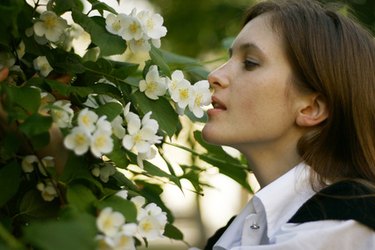
There are several different methods of extracting the fragrance, or essential oils, from plants. Enfleurage, a process that uses fat to absorb the fragrant oils from plants, is a method that requires no special equipment and can be performed at home.
Create a Fragrant Pomade
Step 1
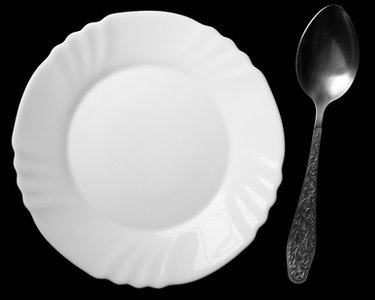
Wash and dry two large dinner plates. Melt lard or vegetable shortening and pour the melted fat into both plates to a depth of 1/2 inch. Allow the fat to cool to a solid state. Cut several crisscross patterns across the fat on both plates.
Video of the Day
Step 2

Pick your plants. After a flower blooms, the fragrance of the petals begin to fade, so look for newly opened blossoms. If you are picking herbs, pick them before the flowers open. Pick day-blooming flowers very early in the morning. Pick night-blooming flowers after dark.
Step 3

Spread wax paper on the counter. Place only the portions of the plant that you will be using for your extraction on the wax paper. If you are extracting fragrance from flowers, use only the blossom petals and discard any leaves, stems or other green portions of the plant. If you are using herbs, keep the leaves and flowers, but discard all stems.
Step 4
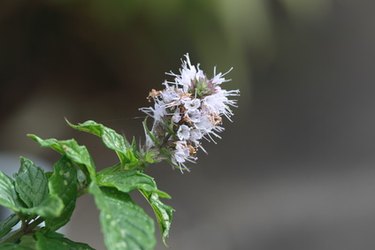
Shake two to three inches of flower petals or herb leaves over the fat on one plate. Place the second plate upside down over the first plate so that the petals are covered with fat on both sides. There should be no air gaps between the rims of the plates. Tape the plates tightly together. Set the plates aside in a safe, warm place for two days.
Step 5
After two days, open the dinner plates, remove all the wilted plant materials and add fresh plants, prepared as before. Tape the plates back up again, and allow to sit for another 48 hours. Repeat this process six to eight times until the fat smells very strongly of the desired fragrance. You have created a fragrant pomade.
Create Perfume
Step 1
Scrape the fat pomade from the plates and place it in several small bottles. Each bottle should be about half full of the fat.
Step 2
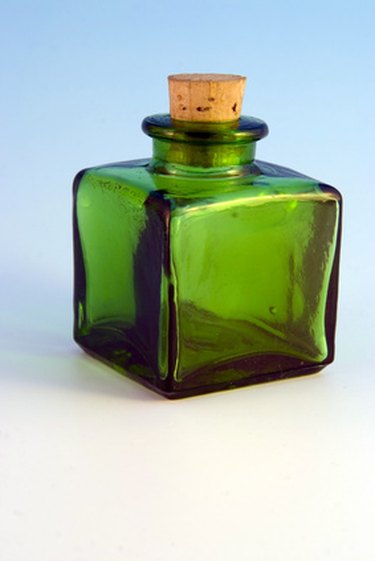
Fill the bottles the rest of the way with rubbing alcohol or vodka. Seal each bottle tightly to prevent evaporation of the alcohol.
Step 3
Store the bottles somewhere dark, where it is not too warm, for three months. The bottles should be shaken often, every day if possible, to make sure the contents stay mixed.
Step 4
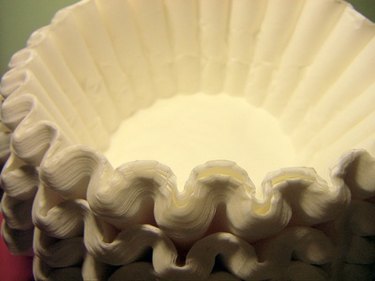
After three months, place a funnel into a clean glass bottle. Line the funnel with muslin, cheese cloth, or a coffee filter. Pour the alcohol from the old bottles into the new bottle, using the filter to strain out the fat.
Step 5
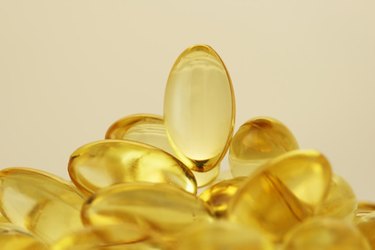
Add a fixative by squeezing out the contents of vitamin E capsules into the fragrant alcohol, one capsule for each 1/4 cup of the alcohol. Shake the mixture well and cap it tightly. If desired, separate the perfume into smaller bottles. Make sure that all bottles have tight lids and are stored away from light and heat. You have created perfume.
Tip
Fixatives slow the evaporation of the volatile essential oils found in perfume. Fixative oils also add their own fragrance to the perfume and should be chosen with that in mind. In addition to vitamin E, there are other oils that can be purchased from the drugstore or perfume specialty shops, including patchouli, oil of cedar, grape seed oil, oil of sandalwood, sweet almond oil, glycerin, and castor oil.
Warning
Be sure to pick anything green out of your flower petals. The leaves and stems of flowers can carry fungi that will grow between your plates and ruin your fragrance.
Video of the Day